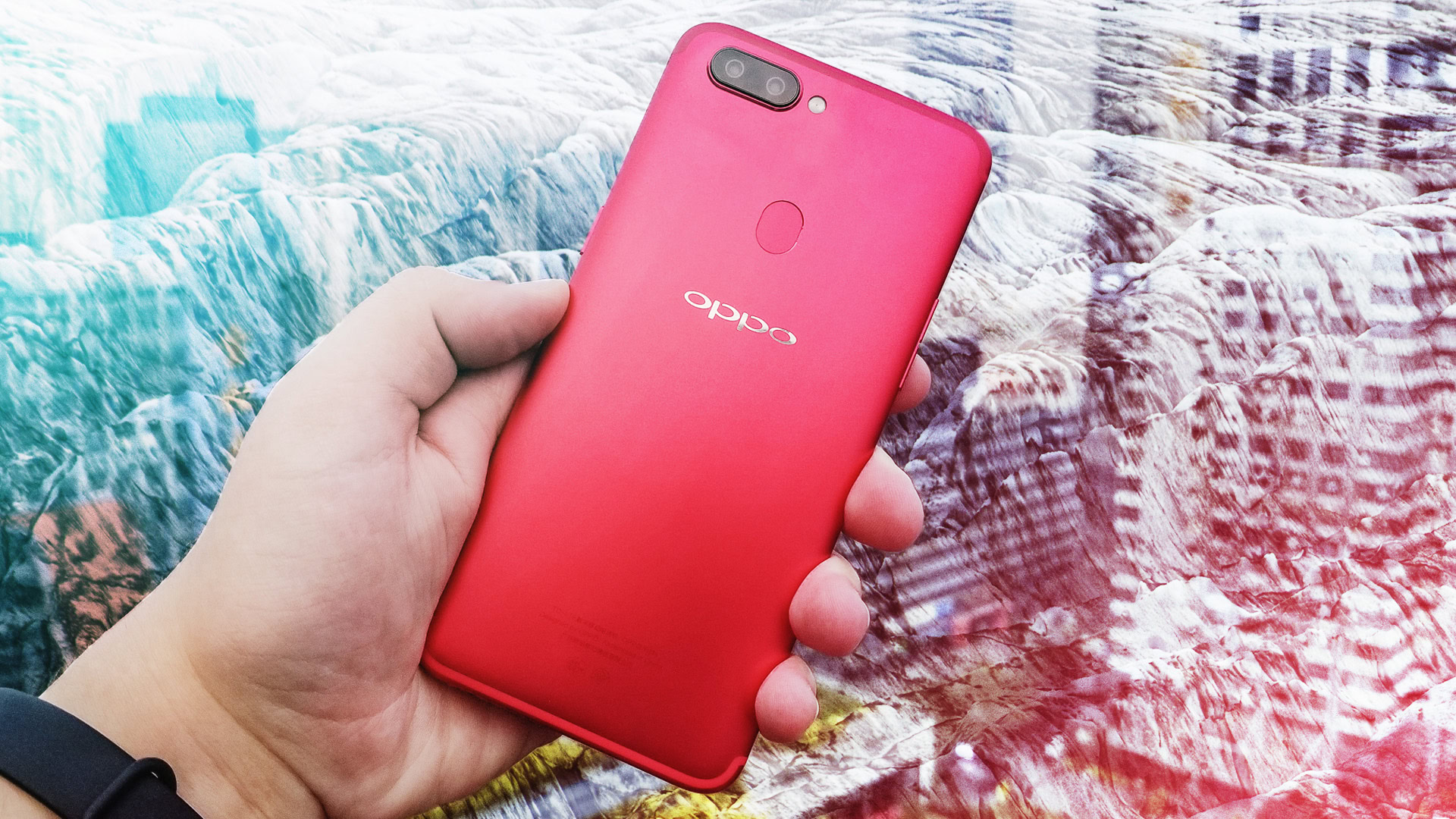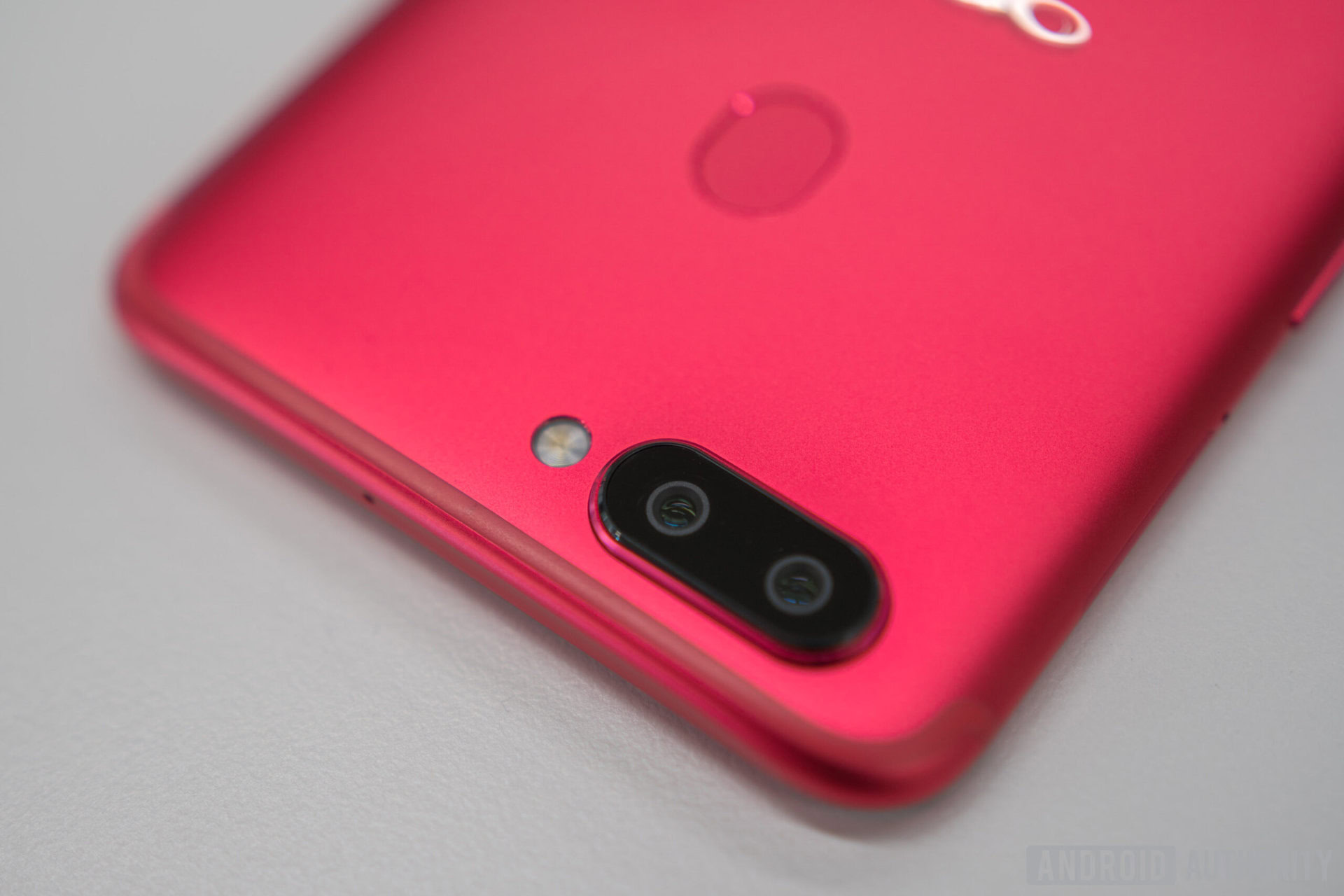Affiliate links on Android Authority may earn us a commission. Learn more.
OPPO R11s hands-on
November 10, 2017

There are three big changes coming with OPPO’s new R11s compared to this summer’s R11.
The first is the 6-inch, 18:9 aspect ratio display. There’s very little bezel, though the edges aren’t quite as curved as they are on the Samsung Galaxy S8. Overall, this new display looks great.
If you look closely, you can see what OPPO is calling the starry night effect, where there is a slight red gradient at the top and bottom of the glass. It’s a subtle touch, but it makes the phone feel more like a single piece of hardware. This effect is only on the red model, which is the one we were able to spend some time with. You can also get the R11s in black or champagne, if you’re looking for a less flamboyant look.

Either way, you should know that the fingerprint reader has moved to the back of the phone, to accommodate the display. Fortunately, the reader seems just as quick as the one on the R11.
The second big change concerns the cameras. The dual 16 MP and 20 MP rear cameras are both “main cameras” offering 2x lossless zoom.They’re now both f/1.7 apertures, which should make the R11s a tad better than the R11 in low light. The 16 MP sensor handles everyday photos, while the 20 MP sensor is tuned for low-light conditions. As OPPO puts it:
“It will intelligently synthesize 2.0µm pixels to quadruple (4X) the size of the photosensitive area of the sensor, increasing the overall sensitivity to light for all images.”

While our time was very limited with the R11s, we were able to go out and get some camera samples. OPPO assured us that our unit was running final software, and image quality is just as good we expected. Images are very sharp and detailed, with accurate color reproduction.
One minor critique is a slight lack of saturation, or punchiness, which some will be used to getting on cameras like the Galaxy S8. Otherwise, this setup works pretty well in good lighting. You can check out some camera samples below.
It’s difficult to judge low-light performance just yet, but it’s not looking much better than the R11. There’s a good amount of lens flare around bright objects, which you can see in some of our shots. We’ll take a closer look into this and report our findings in our full review in the coming weeks.
Perhaps what’s most notable is the new AI beauty mode. OPPO tells us that they analyzed thousands of photos of people from around the world and consulted with beauty professionals to develop what is likely be the best beauty mode to date. We’ll take a closer look at that in our review, too.
The third change that OPPO presented was a new iteration of its ColorOS software, version 3.2. The R11s will run Android 7.1.1 out of the box. OPPO wouldn’t comment on any potential Android 8.0 update and said it would instead focus on what its core audience in China wants, like the AI Beautification Mode. That’s also OPPO’s reasoning behind the choice of microUSB instead of USB-C.
One really nice design feature with the R11s is that the ports are indented, so the bottom is more comfortable to hold with your pinky finger.
| OPPO R11s | |
|---|---|
Display | 6.01-inch AMOLED 2,160 x 1,080 pixels Full HD+ resolution 401 ppi 18:9 aspect ratio Gorilla Glass 5 |
Processor | Octa-core Qualcomm Snapdragon 660 (4 x 2.2 GHz, 4 x 1.9 GHz) |
GPU | Adreno 512 |
RAM | 4 GB |
Storage | 64 GB microSD up to 256 GB |
Cameras | Rear cameras Regular: 16 MP, ƒ/1.7 aperture Low-light: 20 MP, ƒ/1.7 aperture Front: 20 MP, ƒ/2.0 aperture |
Battery | 3,200 mAh Non-removable VOOC Flash Charge 5V/4A |
Water resistance | No |
Network | GSM: 850/900/1800/1900MHz WCDMA: 850/900/1700/1900/2100MHz FDD-LTE: Bands 1/2/3/4/5/7/8/20/28 TD-LTE: Bands 38/39/40/41(2535-2655) |
Connectivity | Wi-Fi 802.11 b/g/n/ac dual band Bluetooth 4.2 A2DP, LE, EDR microUSB (USB 2.0) 3.5 mm headphone jack |
NFC | No |
SIM | Dual Nano-SIM cards |
Sensors | Proximity Light G-sensor E-compass Gyro |
Software | Android 7.1.1 Nougat ColorOS 3.2 |
Dimensions and weight | 155.1 x 75.5 x 7.1 mm 153 g |
As far as specs are concerned, the R11s has a Snapdragon 660, 64 GB of internal storage (plus microSD expansion), 4 GB of RAM, and a 3,200 mAh battery. The R11s Plus is similar, but features a larger display at 6.43 inches, bigger 4,000 mAh battery, as well as 6 GB of RAM.
While global availability and pricing is still to be determined, you can expect the OPPO R11s to cost around $475 and the R11s Plus to cost around $100 more. It might go without saying, but that’s a very competitive price for what you’re getting, especially considering the number of improvements that OPPO has made from the R11.
What do you think of the OPPO R11s at this price? Would you be interested in picking one up when it makes it to the US?